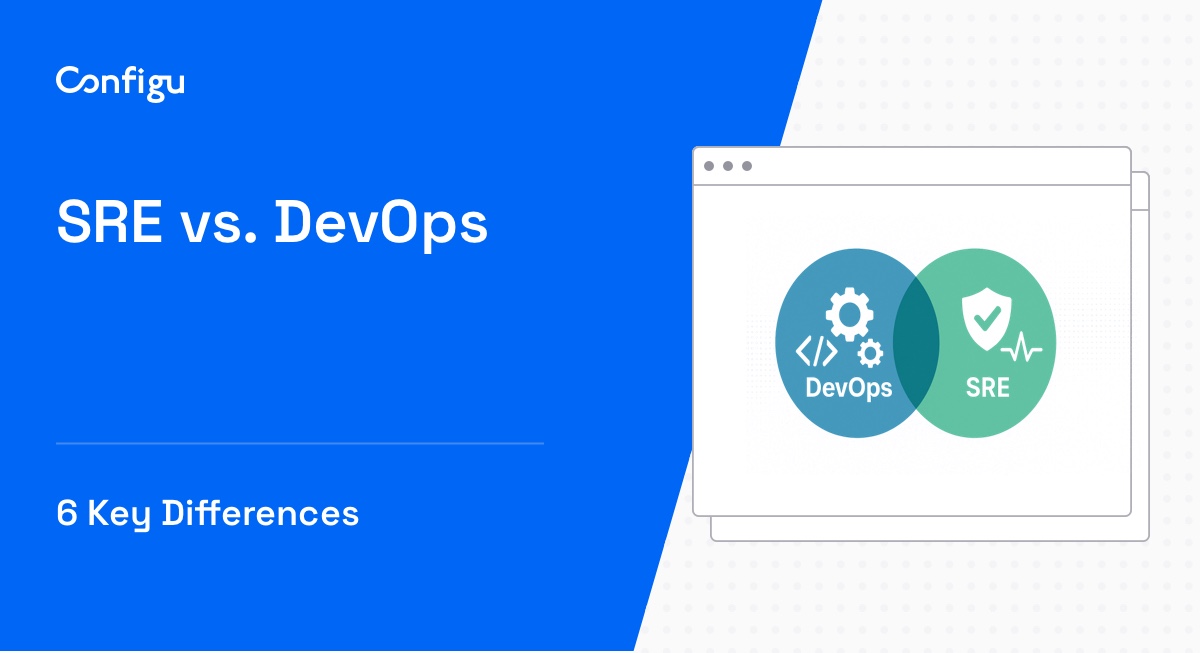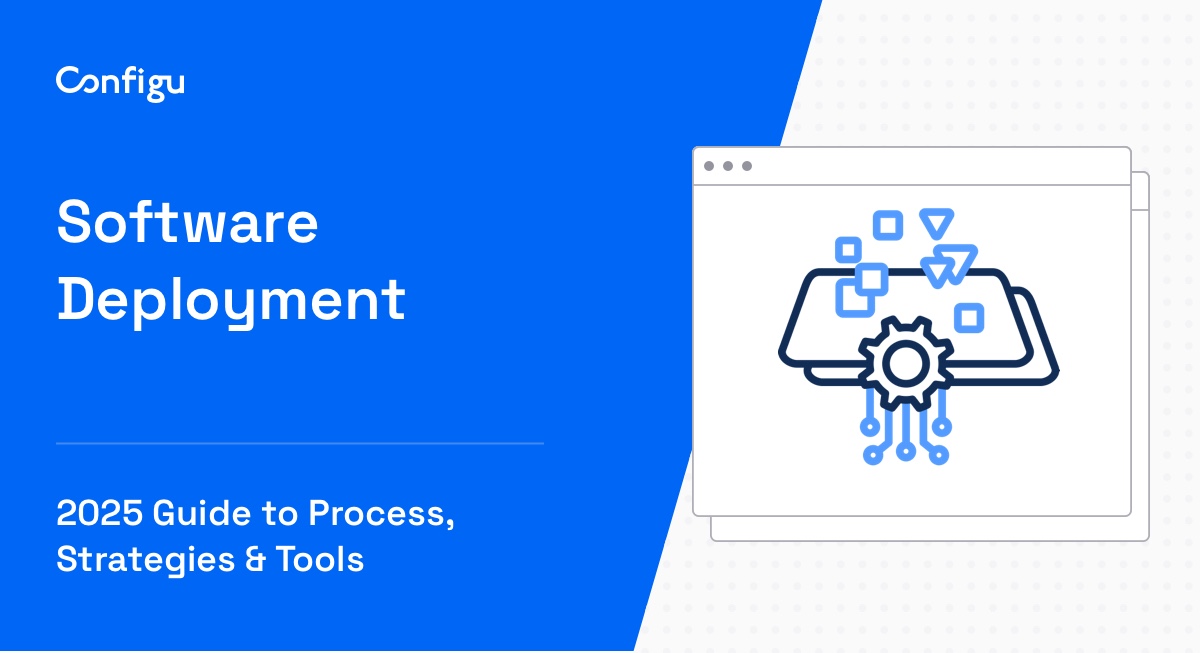What Is Configuration Management?
Configuration management, often abbreviated as CM, is a process for establishing and maintaining consistency of a product’s performance and functional attributes with its requirements, design, and operational considerations throughout its life. It is a discipline applying technical and administrative direction throughout the product lifecycle to establish technical baselines and make it possible to implement, monitor, and control changes.
Configuration management can be viewed as the “big picture” view of a system. It not only covers the individual components but also how they interrelate and depend on each other. The process of configuration management includes the identification of the configuration items (CIs) that make up the IT environment, control of the CIs and their changes, and recording and reporting on the status of the CIs and their changes.
Traditionally, configuration management was an “IT thing”, used by IT teams to manage changes to critical infrastructure like servers and network equipment. While IT configuration management is still important, the new frontier of CM is the world of software engineering. Software configuration management is a critical part of the software development life cycle (SDLC), yet in many organizations, it is not well understood, and not properly managed, if at all.
In this article, we’ll explain the basics of configuration management (which apply both to IT and software engineering), and then explore how CM works in the software world and how you can turn software configurations from a risk to a competitive advantage.
This is part of an extensive series of guides about DevOps.
In this article:
Core Principles of Configuration Management
These core principles of configuration management, which were introduced in the field of IT service management, are still relevant today and should also be familiar to modern DevOps teams.
1. Consistency
Consistency refers to the need for all aspects of a system to be consistent with each other. This includes the system’s design, functionality, and documentation. Consistency ensures that all parts of the system work together harmoniously and that changes to one part of the system do not negatively impact other parts.
2. Auditability
Auditability is the ability to track and record changes to a system over time. This is crucial in maintaining accountability and ensuring that changes are made in a controlled and approved manner. Auditability also allows for the identification and correction of errors or discrepancies in the system.
3. Reproducibility
Reproducibility is the ability to recreate a specific state of a system at a given point in time. This is essential in identifying and resolving issues, as well as in ensuring that changes to the system can be rolled back if necessary. Reproducibility also helps to maintain consistency and repeatability in the system.
4. Change Management
Change management is the process of managing and controlling changes to a system. This includes identifying potential changes, assessing the impact of those changes, approving or rejecting changes, and implementing approved changes. Change management ensures that changes are made in a controlled and approved manner, and that they do not negatively impact the system or its functionality.
Why Is Configuration Management Important in Software Engineering?
Enables Consistency and Repeatability
In software engineering, configuration management ensures that all systems and components are consistent in their design and functional capabilities. This consistency enables repeatability—the ability to reliably reproduce a process or system state.
When a software process is repeatable, it means that the process will yield the same results when given the same input under the same conditions. This is particularly useful in testing and debugging, where the ability to reproduce errors and bugs is crucial to their resolution.
Facilitates Parallel Development
Configuration management is a key enabler for parallel development. It allows multiple teams or individuals to work on separate parts of a system simultaneously without stepping on each other’s toes.
The idea is simple—each team works on their own ‘branch’ of the software configuration, and when they’re done, they ‘merge’ their changes back into the main ‘trunk’, just like they do with software code. This makes software configuration visible to all team members and allows teams to collaborate and iterate on software configuration.
Reduces Integration Issues
Configuration management helps to reduce integration issues that are common in software development. These issues often arise due to discrepancies between different parts of a system that were developed independently.
By maintaining a consistent and comprehensive view of the system, configuration management can help to identify potential integration issues early, before they become major problems.
Enables Dependency Management
Dependency management is another key aspect of configuration management. In software engineering, dependencies are the relationships between different parts of a system, most commonly software libraries included with a system which are required for its basic functionality.
Configuration management helps to manage these dependencies effectively, ensuring that changes to one part of the system do not adversely affect other parts. This is particularly important in large, complex systems where changes can have far-reaching effects.
Supports Auditing and Compliance
Lastly, configuration management plays a crucial role in audit and compliance. It provides a detailed record of what changes were made, when they were made, who made them, and why they were made. This information is invaluable in audits and can greatly simplify compliance with regulations and standards.
Learn more in our detailed guide to configuration management in software engineering
Tips From the Expert
In my experience, here are tips that can help you better implement configuration management in DevOps:
-
Implement layered baselines
Create multiple baselines for different stages (dev, test, prod) to ensure that changes specific to an environment don’t affect others. This approach lets you adapt configurations as you progress through your CI/CD pipeline without breaking consistency. -
Leverage dynamic configuration templates
Use templating tools like Helm or Ansible to create dynamic configurations that adapt to variables (e.g., environment, application version). This minimizes hardcoding and simplifies changes across environments. -
Integrate with observability tools
Connect your configuration management tools to monitoring platforms (e.g., Prometheus, Datadog). This allows real-time insight into configuration drift, ensuring your system state matches the expected configuration. -
Use immutable infrastructure patterns
Beyond Configuration-as-Code, adopt immutable infrastructure principles where components (e.g., VMs or containers) are never modified after deployment. This makes rollback simpler and avoids configuration drift. -
Adopt a modular configuration approach
Break down configurations into modular components (e.g., network, storage, app settings) that can be reused across multiple services. This reduces duplication, simplifies updates, and keeps configurations DRY (Don’t Repeat Yourself).
The Role of Configuration Management in Modern Software Practices
Let’s see how configuration management impacts core practices in software engineering teams.
Configuration Management in Agile Development
In Agile development, configuration management supports the rapid and frequent changes that characterize this methodology. It helps track and manage changes, ensuring that the team is always working with the correct configuration, suitable for the current version of the software. This ensures that configurations are not left behind, and don’t break, even as teams iterate and rapidly innovate.
Configuration Management in DevOps
In a DevOps team, configuration management plays a critical role. It ensures that the entire team has a consistent understanding of the system’s current state, facilitating better collaboration and faster delivery of software. With configuration management, DevOps teams can automate the deployment and configuration of software applications, reducing manual errors, increasing development velocity, and improving security and compliance.
Configuration Management in CI/CD
In a Continuous Integration/Continuous Deployment (CI/CD) pipeline, configuration management is equally important. It ensures that the software’s configuration remains consistent across different stages of the pipeline. This not only ensures that the software works as expected in different environments, but also facilitates seamless deployment and easier management of applications in production.
Related content: Read our guide to configuration management best practices (coming soon)
What Is Configuration-as-Code?
Configuration-as-Code (CaC) is a modern approach to configuration management that emphasizes the importance of managing configurations with the same rigor and discipline as software code. This means that details of systems, applications, and environments are codified and stored in version-controlled repositories. Such practices have gained prominence with the rise of infrastructure as code (IaC) and the shift towards fully automated deployment and management processes.
One of the cornerstone principles of CaC is the idea of an immutable infrastructure. Once deployed, this infrastructure is never modified directly. Instead, if changes are necessary, they are made in the configuration code and then redeployed. This ensures a predictable and consistent environment every time. Furthermore, as configurations are treated like software code, they’re stored in version control systems, such as Git. This storage approach guarantees that every change is tracked, and the entire history is accessible for audits or reviews.
Automated testing and validation are also crucial in the CaC paradigm. Before applying any configuration changes, automated tests can be run to validate the changes’ correctness, drastically reducing the risk of errors. Additionally, configurations written as code can be designed to be modular, promoting reuse across various infrastructure components or even different projects. This modularity not only accelerates the deployment process but also fosters uniformity across multiple environments.
Integrating Configuration-as-Code with CI/CD pipelines offers another significant advantage. It ensures automated, tested, and validated deployment of configuration changes into target environments, eliminating the need for manual interventions. This integration further enhances transparency and collaboration since configurations stored in version control systems allow team members to review, discuss, and work collaboratively on configuration changes.
In case of trouble, the Configuration-as-Code approach also provides a quick rollback mechanism, enabling teams to revert to a previously known good state efficiently, thereby enhancing system resilience and minimizing recovery times.
The Software Configuration Management Process
Here is a general process for implementing configuration management in a DevOps organization.
Data Collection
The initial step towards software configuration management is collecting the data. This includes data from environments like development, staging, and production, for all the components and services you’re using. Remember to identify sensitive data such as passwords and keys and ensure they are encrypted and securely managed. At this stage, organizing your data files is key, as they will serve as a central reference point for the process.
Establishing Baselines
Once you’ve compiled and organized the data, you’ll need to establish a baseline. A baseline configuration is a particular state of configuration that ensures smooth operation of the dependent software without errors. You can usually create this baseline by reviewing the configuration settings of a functioning production environment and committing those settings.
Version Control
Employ a version control system in your development project. If you haven’t already, install Git, initialize a repository for the project, and include the configuration data files in the repository. However, exercise caution when adding configuration data to a repository. Make sure to encrypt and securely manage secrets, such as passwords or access keys. If you inadvertently commit such sensitive data to a repository, it carries a significant risk and can allow attackers to exploit your software pipeline.
Auditing
Once the configuration data is organized and included in a repository, it allows for collaboration and enhances visibility of the system’s configuration. Software teams often use the popular pull request workflow to review and edit configuration as code. This helps establish an audit trail and an accounting system. Any changes to the configuration must undergo team review and acceptance. This adds accountability and transparency to all configuration changes.
Learn more in our detailed guide to configuration management process (coming soon)
Benefits of Configuration Management for DevOps Teams
Let’s summarize the benefits of software configuration management for fast-moving DevOps teams:
- Streamlined operations: Configuration management automates many of the tasks associated with managing system configurations, reducing manual effort and the potential for errors. This leads to more efficient processes and faster delivery times.
- Improved collaboration among teams: With a clear understanding of software configurations and their evolution, teams can work together more effectively. This improves software quality and speeds up the development process.
- Faster recovery from failures: By keeping a record of all changes to configuration, it’s easier to identify the cause of a failure and roll back to a previous state if necessary. This reduces downtime and minimizes the impact on the end users.
- Enhanced security and compliance: With configuration management, teams have much better control over configurations, helping them prevent misconfigurations, unprotected secrets, and other issues that can lead to catastrophic security issues. Configuration management makes it possible to enforce security policies and track changes, as well as more easily detect and respond to security incidents.
Related topic: Read our guide to Apple pkl
Automating Configuration Management with Configu
The Configu Orchestrator is an open source project that implements the concept of Configuration-as-Code with powerful CI/CD integration and other advanced features, such as type validation, version control, managing multiple environments and more.
Check out the GitHub repository. If you like it, give us a ⭐.
Related content: Read our guide on configuration management software
See Additional Guides on Key DevOps Topics
Together with our content partners, we have authored in-depth guides on several other topics that can also be useful as you explore the world of DevOps.
Software Documentation
Authored by Swimm
- What is Software Documentation? Types, Tools, and Best Practices
- How to write a great software documentation design (SDD) doc
- 9 great technical documentation examples
kubectl Cheat Sheet
Authored by Komodor
- The Ultimate Kubectl Command Line Cheat Sheet
- Kubectl Restart Pod: 4 Ways to Restart Your Pods
- kubectl config Explained: How to Configure Cluster Access
Application Mapping
Authored by Faddom



